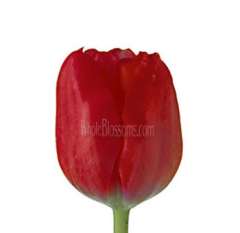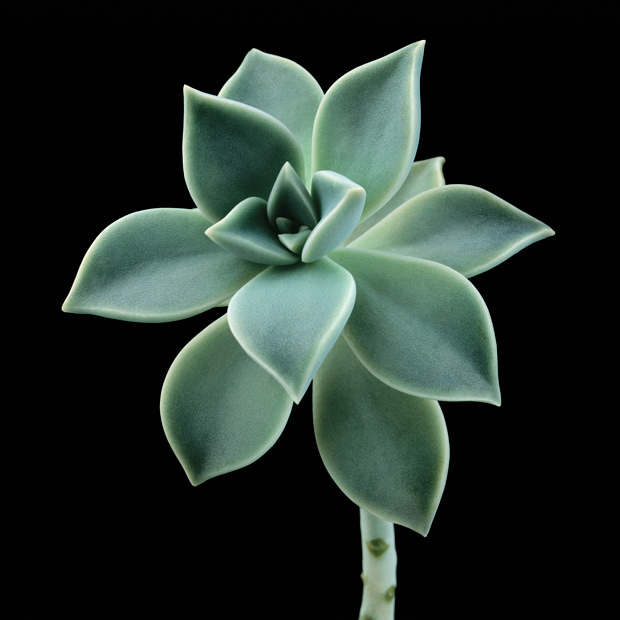Tulip Black Jack
3160 Upper Bay Road, Arcata, CA 800.747.0396. Darwin Hybrid Tulip Black Jack 10 Bulbs - 12/+ cm Bulbs by Hirt's Gardens. Currently unavailable. We don't know when or if this item will be back in stock. Home » Flowers by category » Flowers and Fillers » Tulips » Tulip Single Blackjack Print this page Alstromeria Asters Bouquets Carnations Chrysanthemum Exotic Blooms and Foliages Flowers and Fillers Gladiolas Greens, Foliages and Branches Gypsophila Lilies Limonium Orchids Preserved and Dried Proteas and Leucadendrons Roses.
People have been trying to grow a black tulip for 400 years. Nobody ever has. Now a Dutch horticulturist has claimed at least partial success with a tulip 'the darkest we have ever seen.'
This glossy dark bloom isn`t really pure black, like the illusive object of French novelist Alexandre Dumas` book 'The Black Tulip.'
'But I call that black,' said Geert Hageman, 29, who developed the flower. 'Maybe not very, very black, but black enough. At the very least it is the darkest we have ever seen.'
Hageman admitted that his still-unnamed tulip, the precious product of 25 years of work and 7 years of careful breeding, actually looks a 'very deep purple' when held against a black background.
Nevertheless, the new strain has caused a sensation in Holland, a nation proud of its green thumb and its $1.3 billion-a-year flower industry.
Black Jack Tulip
'The development of a really black tulip is impossible,' Hageman said. Hybrid tulips can only have less and less color; they can never be a true black.
Serious work on the first 'black' tulip began in 1979, when Hageman and his coworkers cross-pollinated two dark purple tulip varieties called the Queen of the Night and the Wiener Weld.
Eight weeks later the marriage yielded seeds, and about 10,000 seeds planted that December produced sprouts the next spring. By June, 1980,
'match-head' sized bulbs developed beneath the sprouts. The bulbs grew progressively larger through six annual plantings until finally, in their seventh year, blooms emerged.
Thousands of blooms were born to the original purple parents. On just one, Hageman plucked his black prize. He claims the moment was unemotional.
'I expected to find it,' he said.
Horticulturists have been searching for the black tulip since tulip bulbs first arrived in Europe from the East in the 16th Century, Hageman said. Modern hothouse hybridization techniques made the breakthrough possible.

Putting the new 'black' tulip on the market is a long process. Next year one bulb turns into three. The year after that the three become 10.

'If we`re lucky,' Hageman said, the tulip could be in flower stalls in six years.
Hageman is confident there is a market for his creation.
'There`s something about black,' he said.
The new flower, Hageman said, holds great promise for hybridization with other varieties--and, of course, for continuing the impossible quest for a truly black tulip.
'We`ll keep trying,' Hageman said.

People have been trying to grow a black tulip for 400 years. Nobody ever has. Now a Dutch horticulturist has claimed at least partial success with a tulip 'the darkest we have ever seen.'
This glossy dark bloom isn`t really pure black, like the illusive object of French novelist Alexandre Dumas` book 'The Black Tulip.'
'But I call that black,' said Geert Hageman, 29, who developed the flower. 'Maybe not very, very black, but black enough. At the very least it is the darkest we have ever seen.'
Hageman admitted that his still-unnamed tulip, the precious product of 25 years of work and 7 years of careful breeding, actually looks a 'very deep purple' when held against a black background.
Nevertheless, the new strain has caused a sensation in Holland, a nation proud of its green thumb and its $1.3 billion-a-year flower industry.
'The development of a really black tulip is impossible,' Hageman said. Hybrid tulips can only have less and less color; they can never be a true black.
Serious work on the first 'black' tulip began in 1979, when Hageman and his coworkers cross-pollinated two dark purple tulip varieties called the Queen of the Night and the Wiener Weld.
Eight weeks later the marriage yielded seeds, and about 10,000 seeds planted that December produced sprouts the next spring. By June, 1980,
'match-head' sized bulbs developed beneath the sprouts. The bulbs grew progressively larger through six annual plantings until finally, in their seventh year, blooms emerged.
Thousands of blooms were born to the original purple parents. On just one, Hageman plucked his black prize. He claims the moment was unemotional.
'I expected to find it,' he said.
Horticulturists have been searching for the black tulip since tulip bulbs first arrived in Europe from the East in the 16th Century, Hageman said. Modern hothouse hybridization techniques made the breakthrough possible.
Putting the new 'black' tulip on the market is a long process. Next year one bulb turns into three. The year after that the three become 10.
'If we`re lucky,' Hageman said, the tulip could be in flower stalls in six years.
Hageman is confident there is a market for his creation.
'There`s something about black,' he said.
Flower Blackjack
The new flower, Hageman said, holds great promise for hybridization with other varieties--and, of course, for continuing the impossible quest for a truly black tulip.
'We`ll keep trying,' Hageman said.